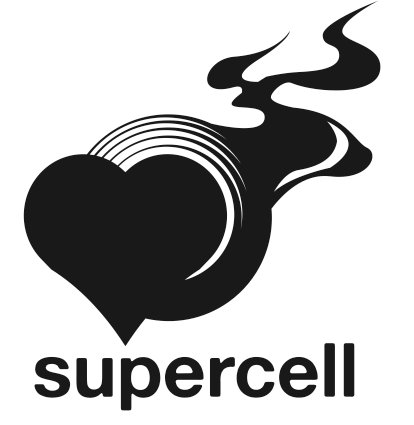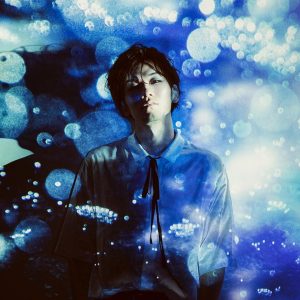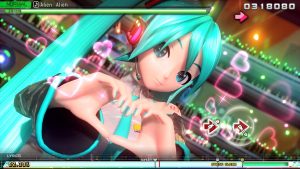
Supercell is a Japanese pop band with an interesting history. They started independently using Vocaloid voice tracks to produce their songs, and then went on to become the producers of anime music themselves! Their story is one that is so uniquely Japanese, and their origins and rise to fame could only happen in the Japanese music scene. That’s one of the things that makes Supercell such an interesting group to read about, but it’s not the only reason to learn more about their music. The main reason is, as always, to find some new otaku music to jam to! And Supercell has got some great upbeat music to offer.
So just how did an independent band rise to the level of fame Supercell holds? How were Vocaloids involved exactly? And what is Supercell doing in the otaku world now? You’ll have to keep reading to find out!
Because Vocaloids Can’t Write Their Own Music…
As previously stated, Supercell began as an independent music group in 2007. They used the Hatsune Miku Vocaloid singing synthesiser to give vocals to their original music and uploaded it to Nico Nico Douga, a widely used video sharing site in Japan. It actually began with just one man named Ryo, who made his original song “Melt” using an illustration alongside Hatsune Miku’s voice from an artist called 119 - without his permission! Luckily, 119 was really interested in “Melt,” which led to a partnership between themselves and Ryo and the beginning of the band that would go on to be called Supercell. Ryo never imagined that his original song would go so viral, and only used Miku’s voice because he didn’t know any singers personally to sing what he had written.
Hatsune Miku (Supercell) “World is Mine”
Clearly, though, “Melt” was a huge, albeit unexpected, success. Other members began to join the group, eventually bringing the number of those involved to 11. Continuing to use the Vocaloid voice synthesisers, Supercell began releasing other songs that went on to score millions of views on Nico Nico Douga including “World is Mine” and “Black Rock Shooter.” Some of their songs found so much success that Supercell was able to monetise them, with “Kibou no Neiro” releasing alongside a novel series called Oto x Maho in 2009. “Kibou no Neiro” was even sold at the anime megastore Animate. That same year, Supercell released their first album - also called Supercell - at Comiket (a huge convention of otaku culture, mostly related to doujinshi and light novels), with all their vocals provided by Vocaloid voices.
In 2009, Supercell signed with Sony Music Japan and their days of uploading onto Nico Nico Douga came to an end. Nagi Yanagi, a singer also well-known on Nico Nico Douga, joined the group as the lead vocalist. And while Nagi would not remain the vocals forever, this important step took Supercell to a whole new level - and into the otaku music world.
What About the Rest of the Otaku Scene?
Supercell broke into the anime scene with “Kimi no Shiranai Monogatari,” an ending song for Bakemonogatari in 2009. That same year, the group won the Japan Disc Gold Award for being one of the best five new artists in Japan. In 2010, Supercell was back to working with Vocaloids again, producing the main theme song for Hatsune Miku: Project DIVA 2nd called “Kotchi Muite Baby / Yellow,” which used Miku for the vocals. Supercell’s older song “Black Rock Shooter” served as an inspiration for a 50-minute anime that same year, bringing the song to life in a whole new way.
Supercell “Great Distance” from Bravely Second: End Layer
In 2011, a new vocalist called Koeda (who was just 15 at the time) joined the group after winning an audition. Supercell’s next big hit for the otaku world was “Sekiranun Graffiti,” the main theme from Hatsune Miku: Project DIVA Extend. Supercell did a few more smaller anime projects like Shakugun no Shana Final, and then scored big again in 2013 by providing the ending song for Magi: The Labyrinth of Magic, “The Bravery.” The same year, Supercell also released “Hakushukassai Utaawase,” the opening theme for Katanagatari.
In 2015, Ryo was producing the music for the video game Bravely Second: End Layer. He wrote both the opening and ending theme songs for the game, called “Great Distance” and “Last Song” respectively. After gaining two new vocalists through auditions 2016, Supercell’s latest contribution to the otaku world was “#Love feat. Ann, Gaku,” the theme for the anime sci-fi film Cencoroll Connect in 2019.
Final Thoughts

Supercell was already a band worth knowing for otaku since their rise to fame came through Hatsune Miku in a success story that could only happen in Japan. But Supercell went on to make some great anime and game music as well once they became a professional group - while still holding onto some Vocaloid ties. Supercell is also a unique group in that it’s 11 members are not all making the music. Ryo, the founder, writes the music and lyrics. Nani Yanagi and Koeda in the past and now Ann and Gaku provide the vocals. And the other members create the illustrations, animation, and other design elements that bring Supercell to life. That’s definitely not something you see outside of Japan very often!
Did you know Supercell before you read this article? What do you find most interesting about them? Which song is your favourite? Did you know how many members went into making their songs? We would love to hear from you in the comments!
Recommended Post






